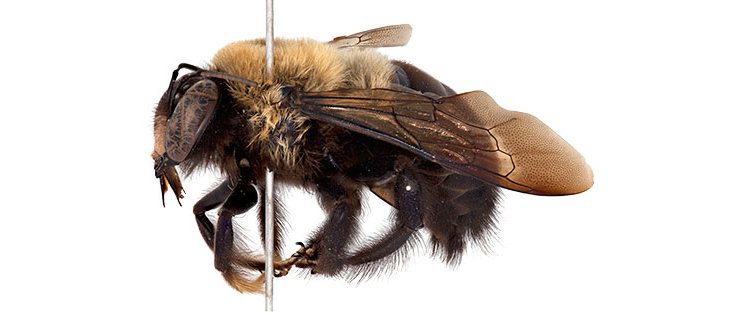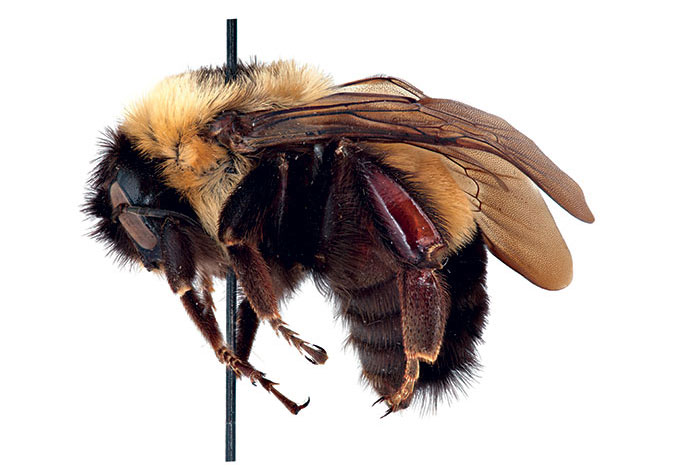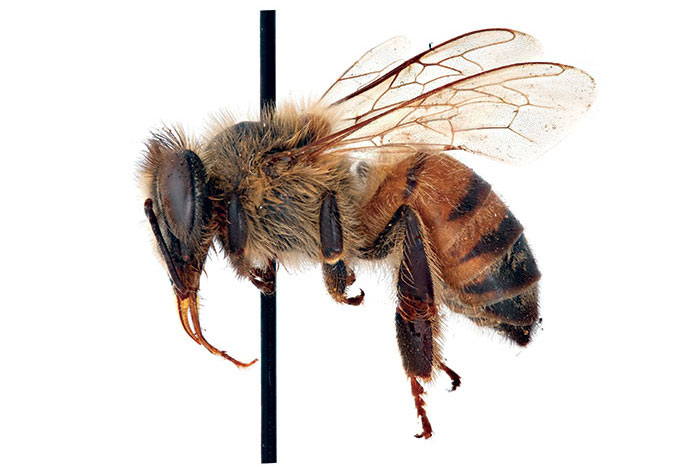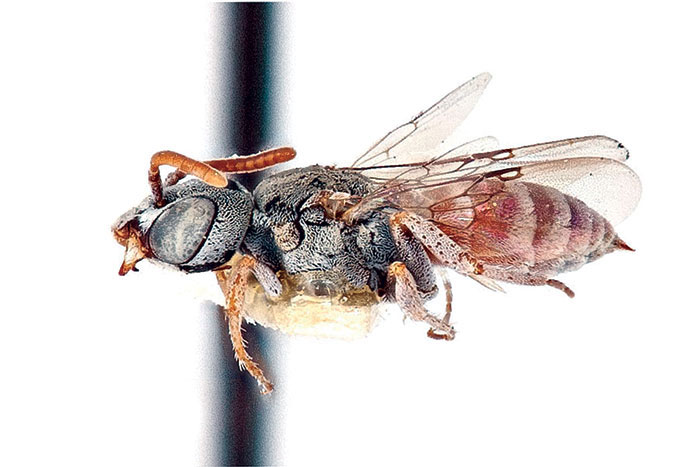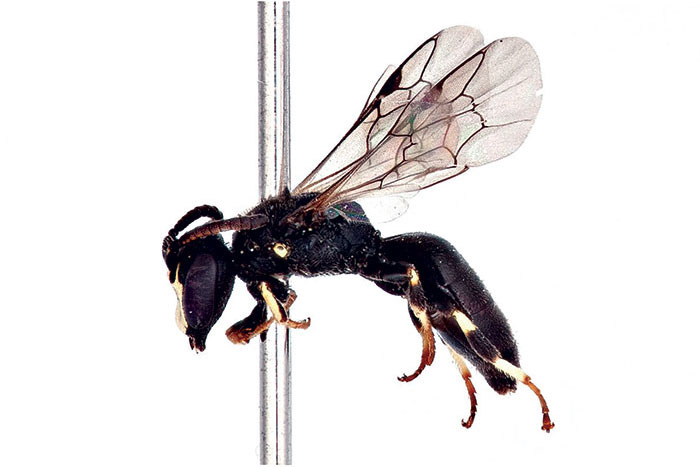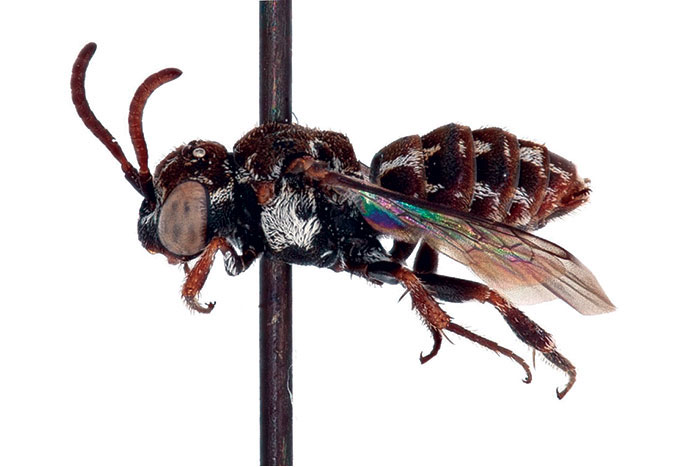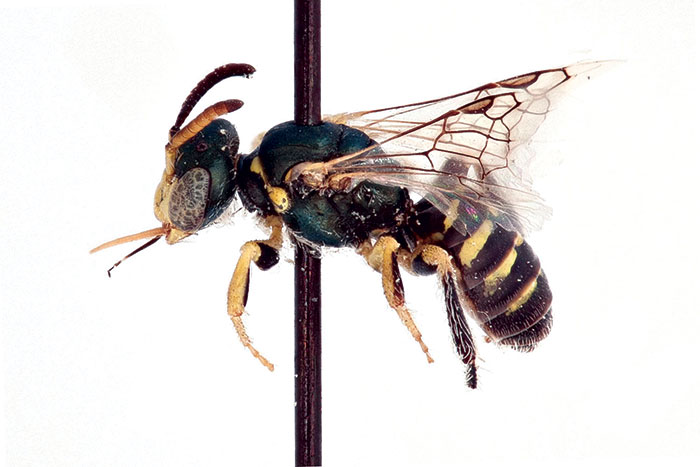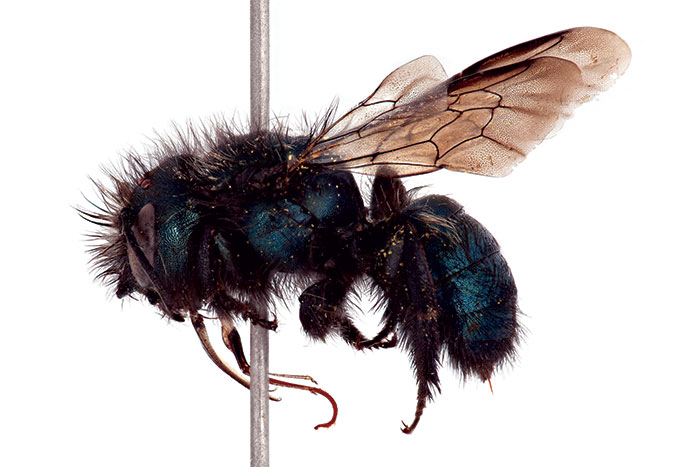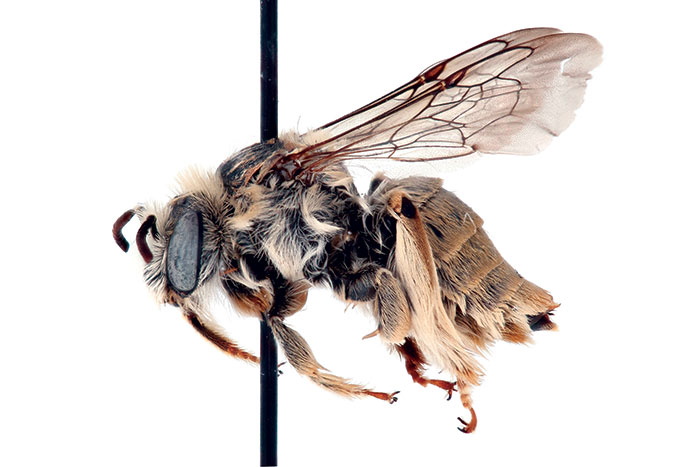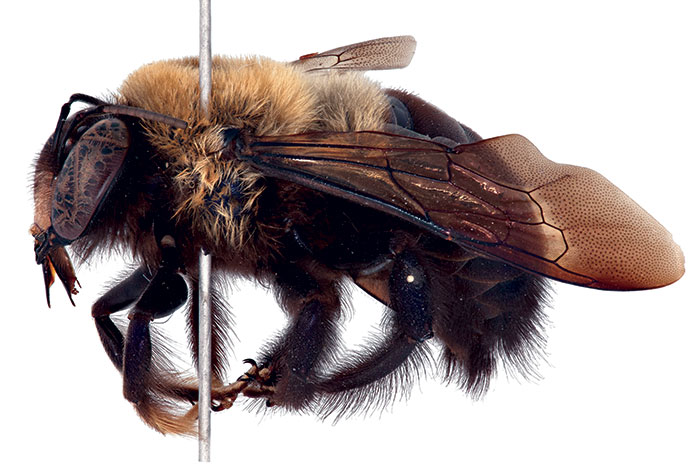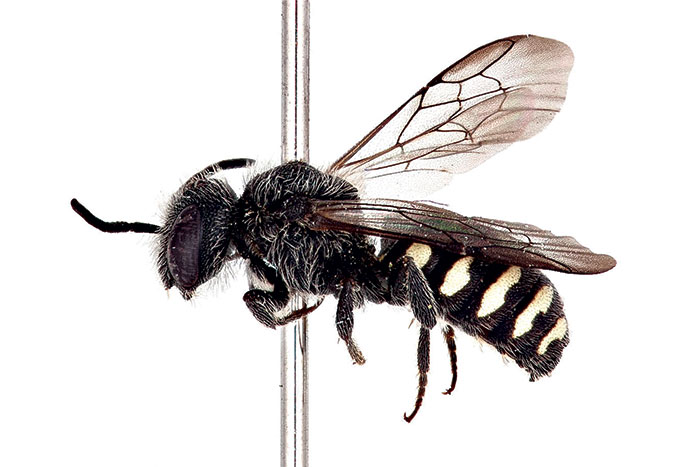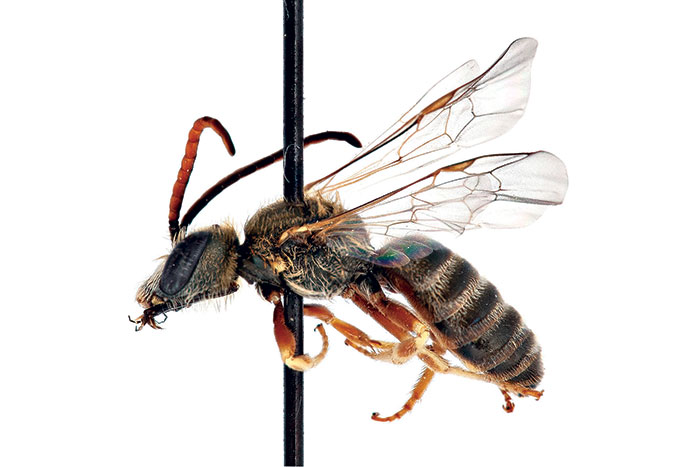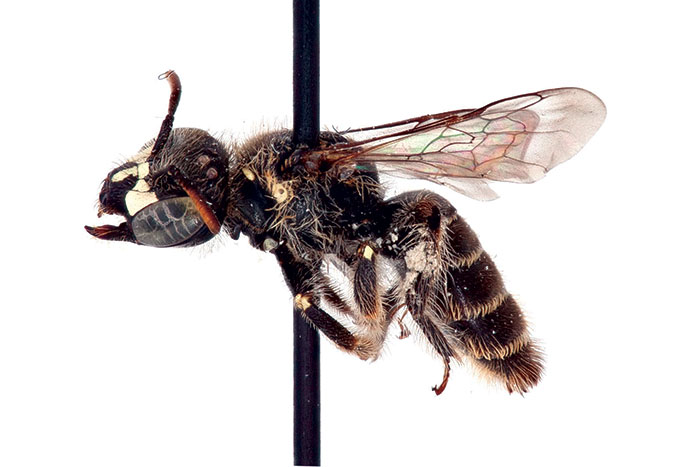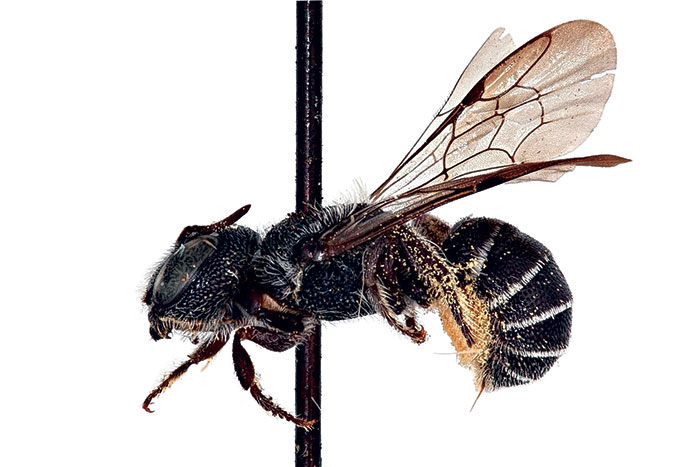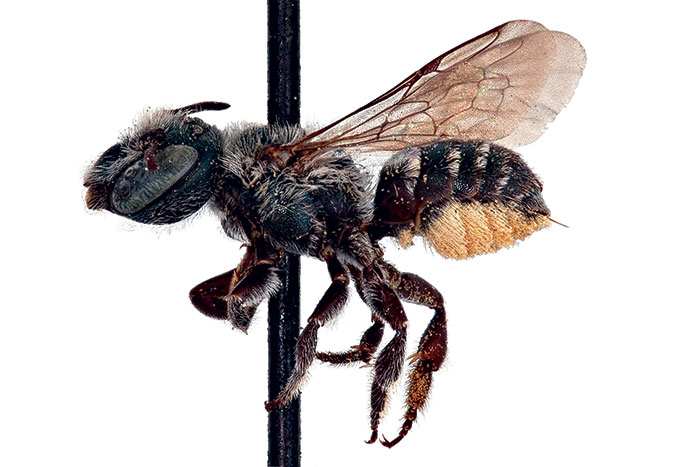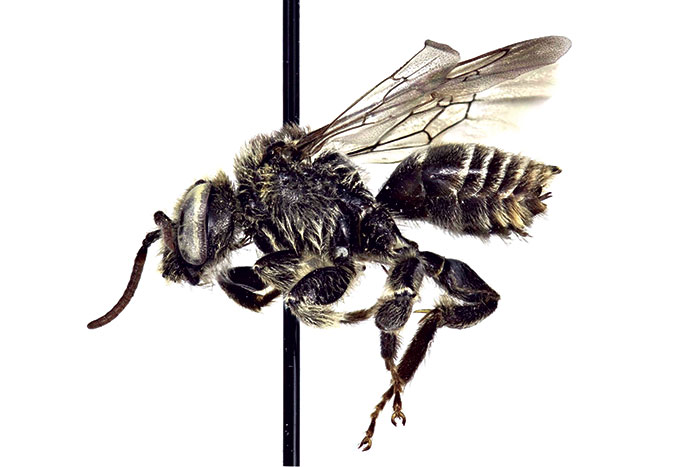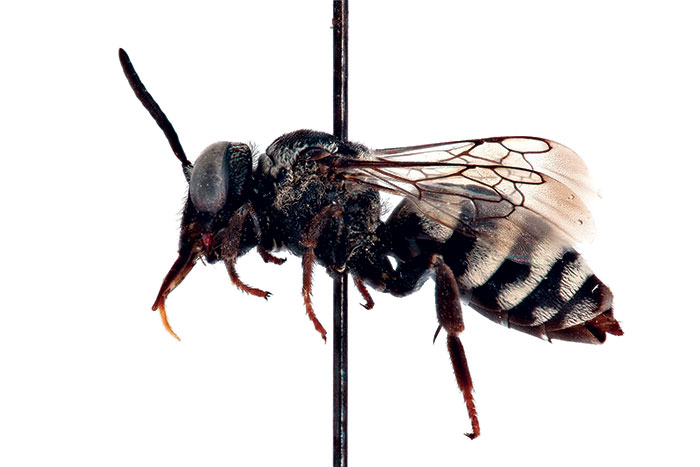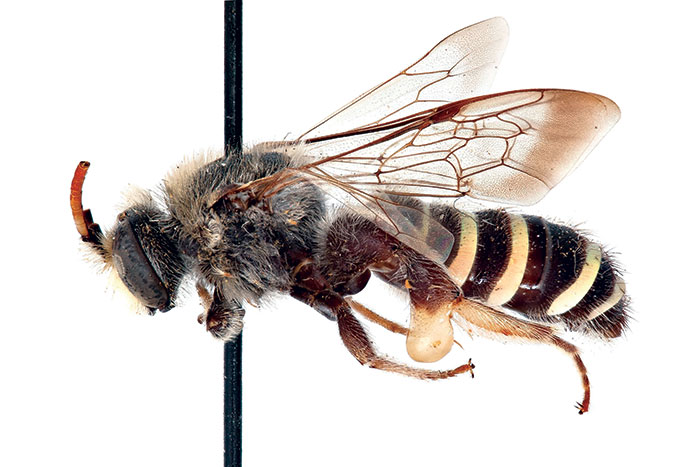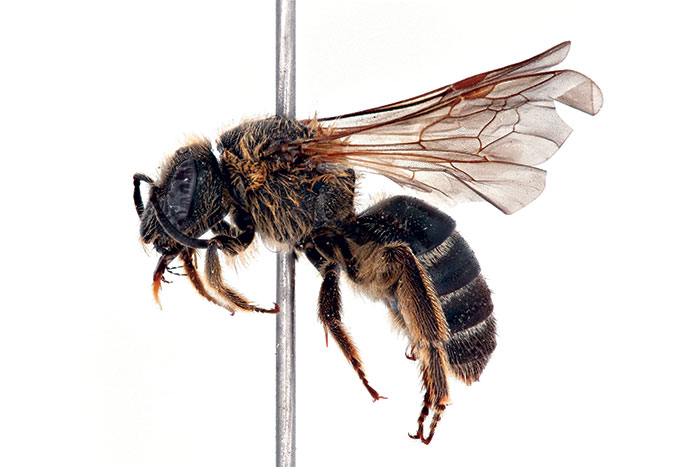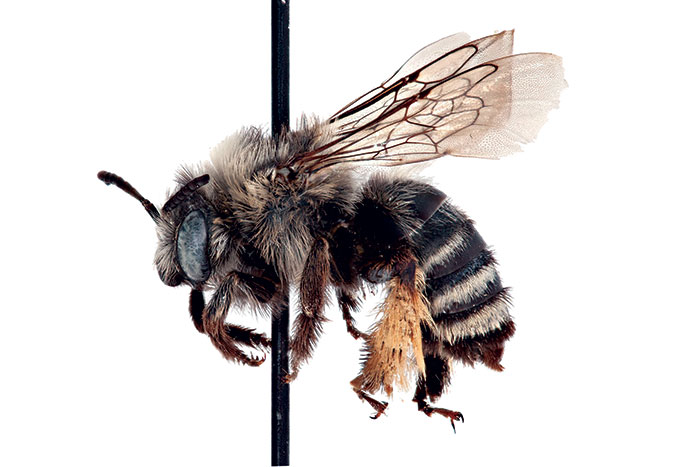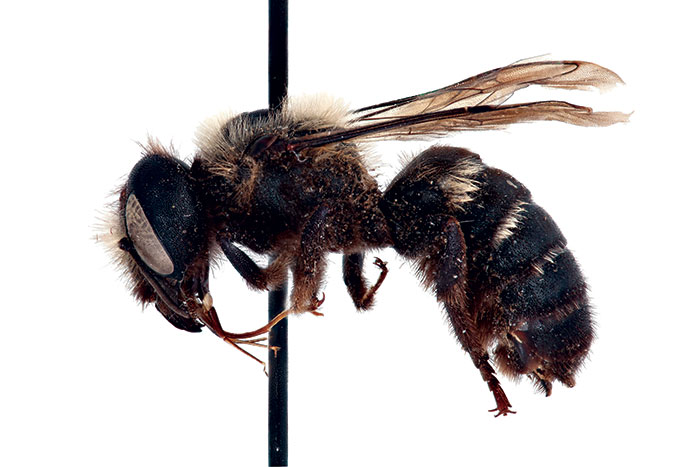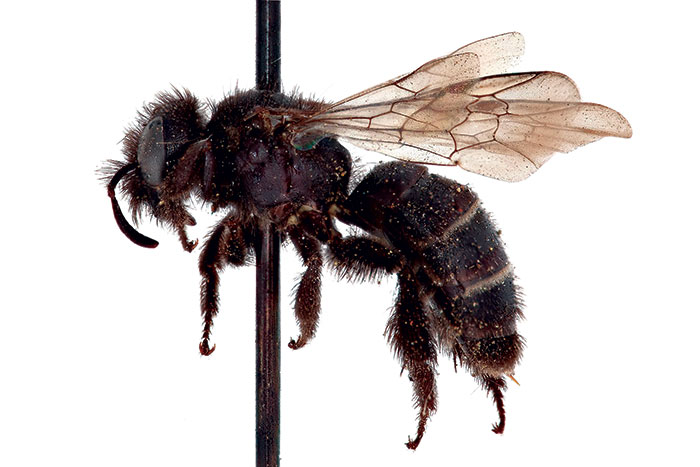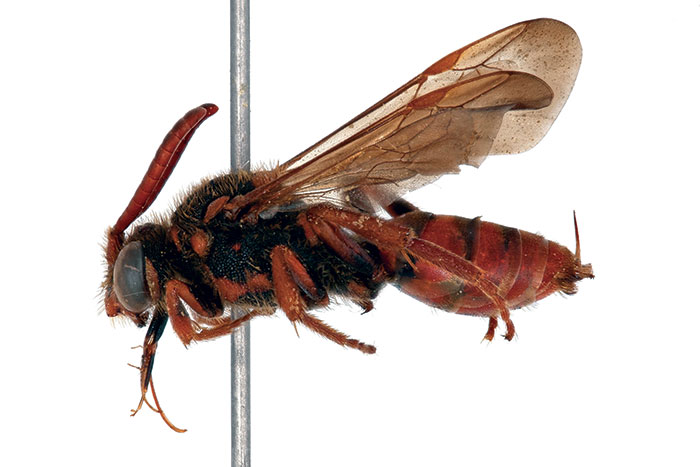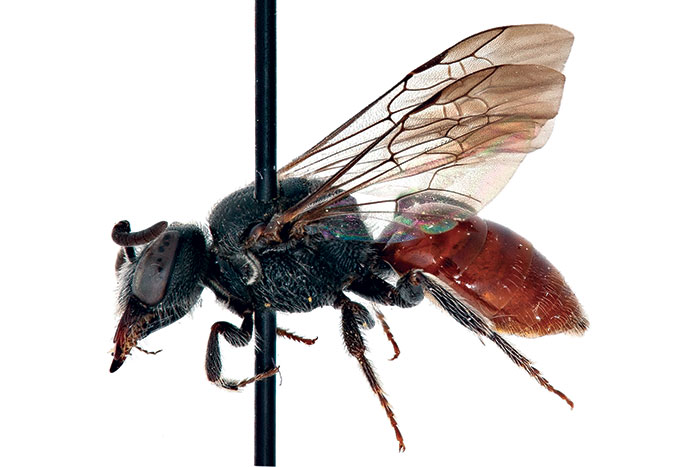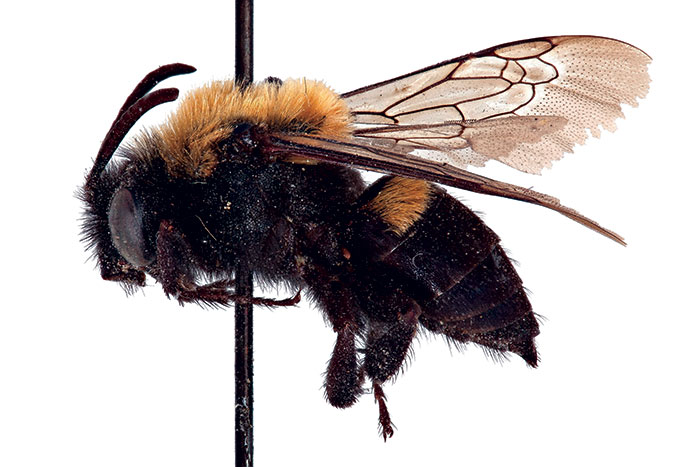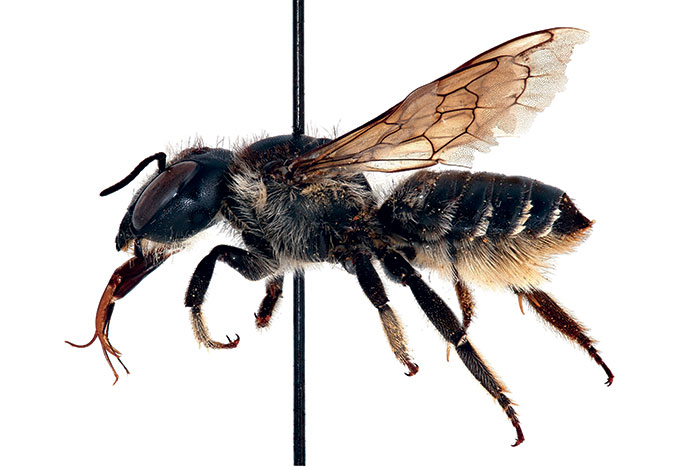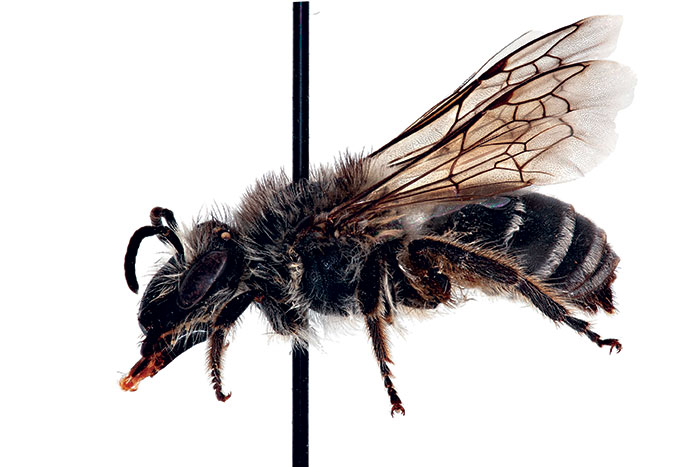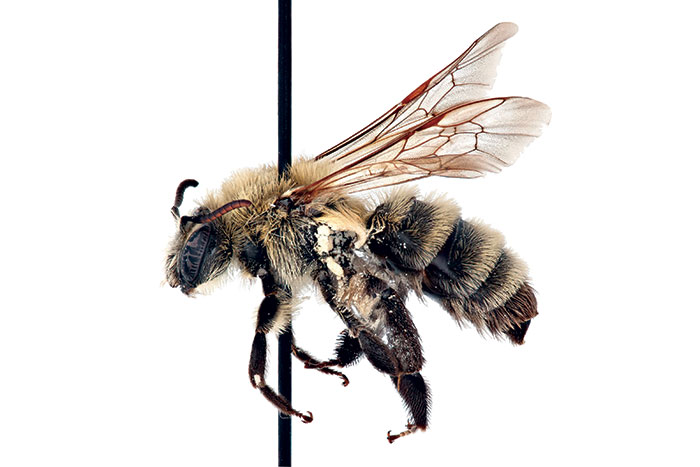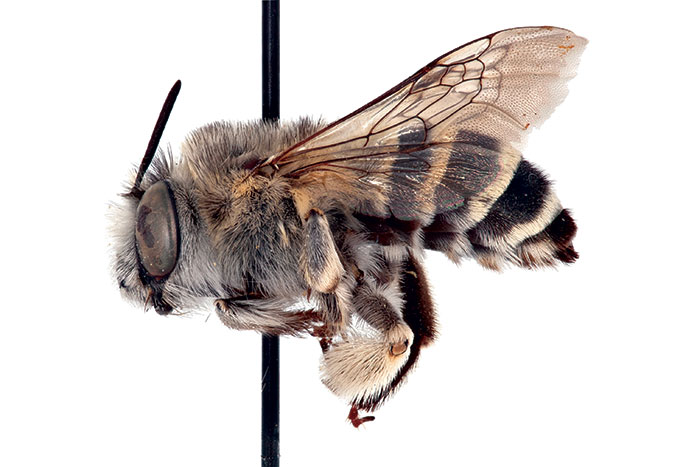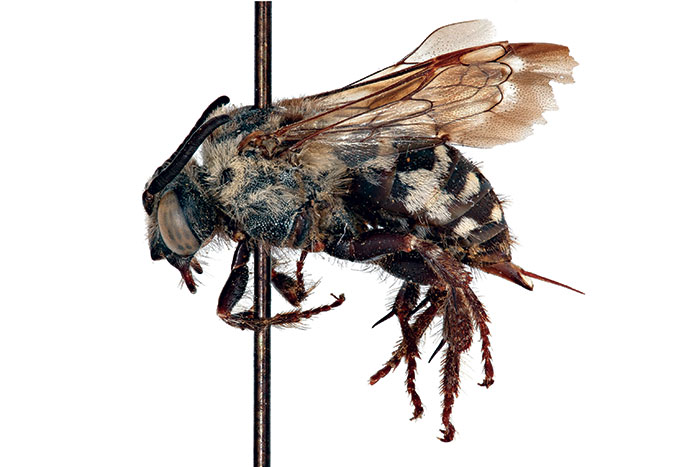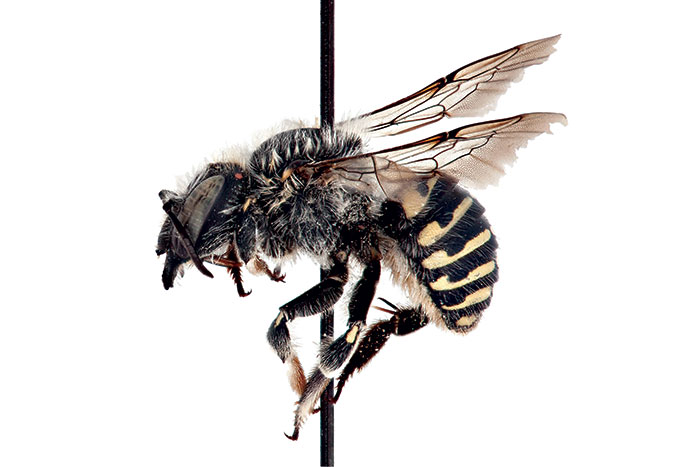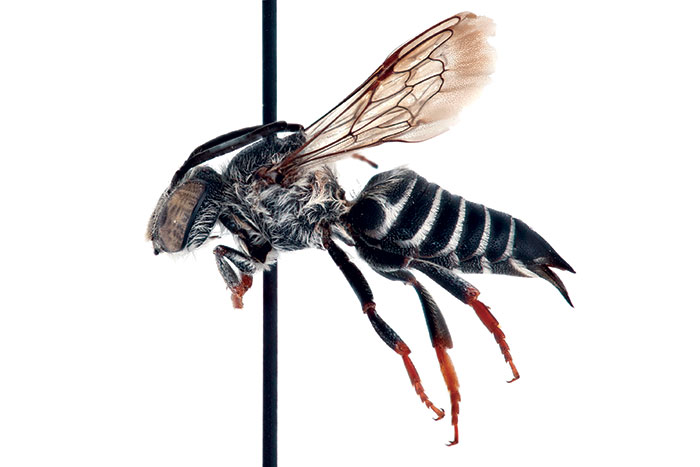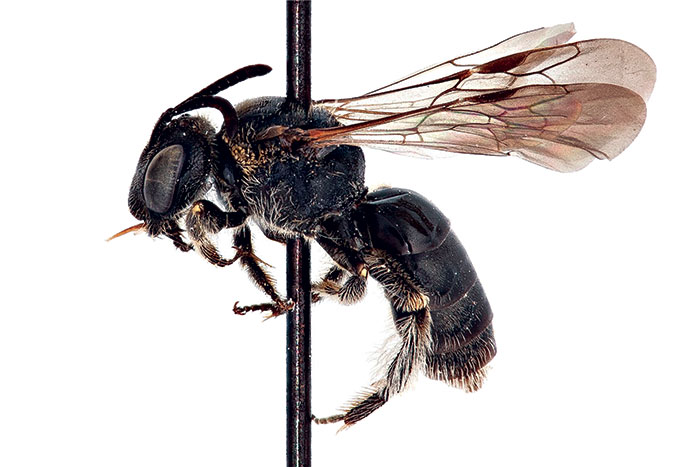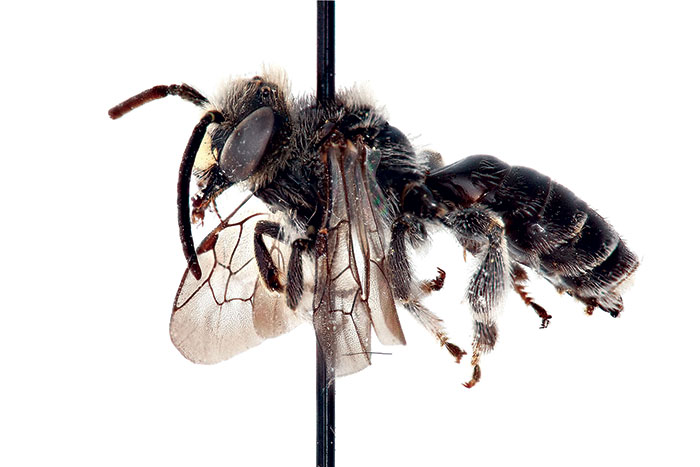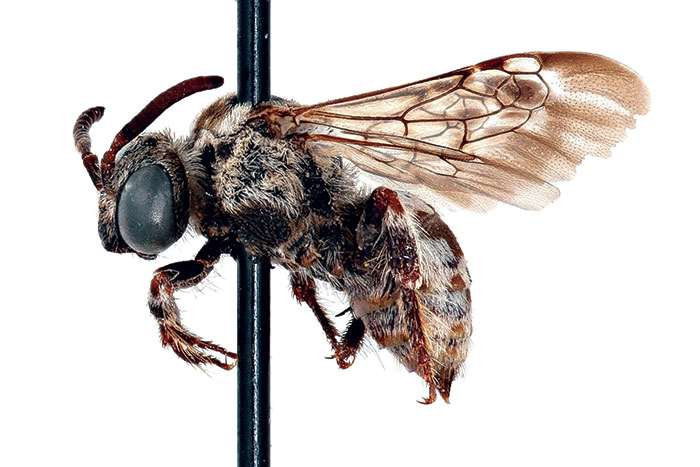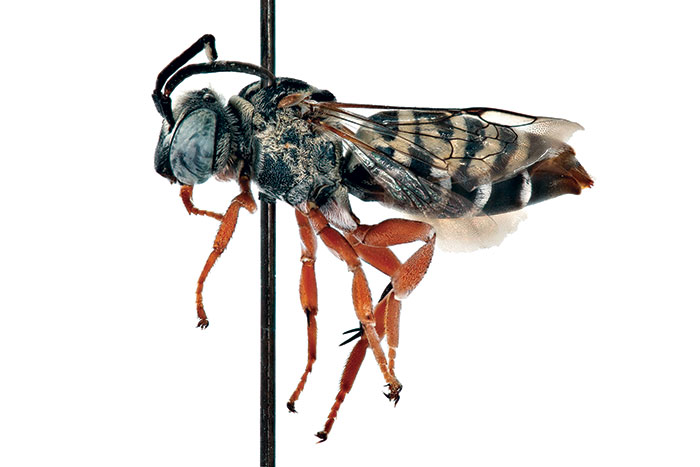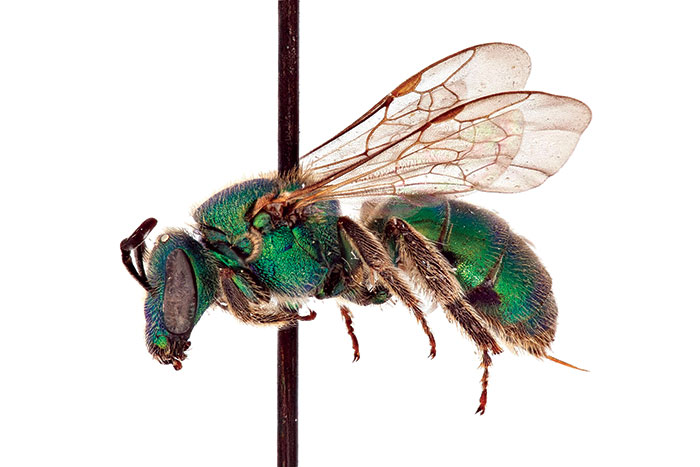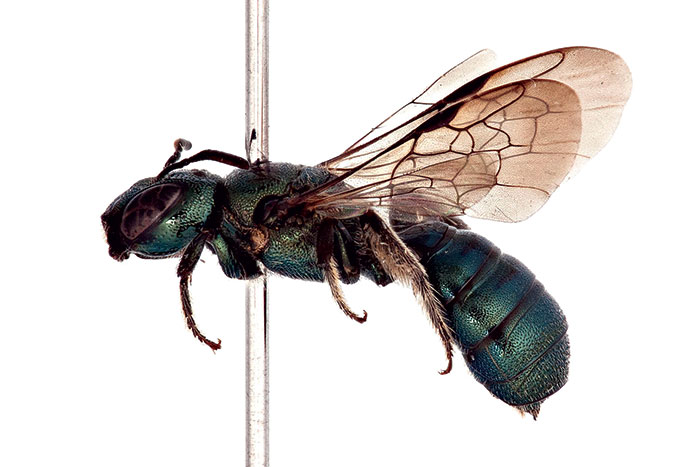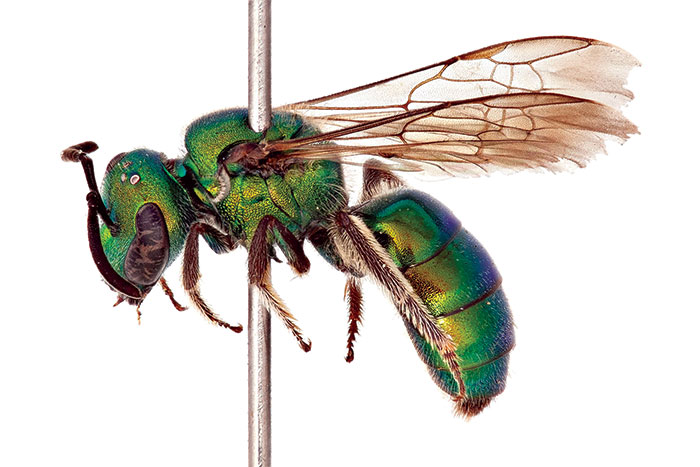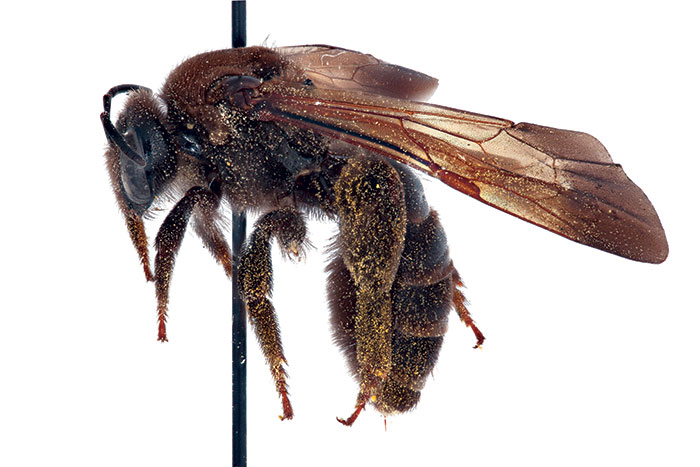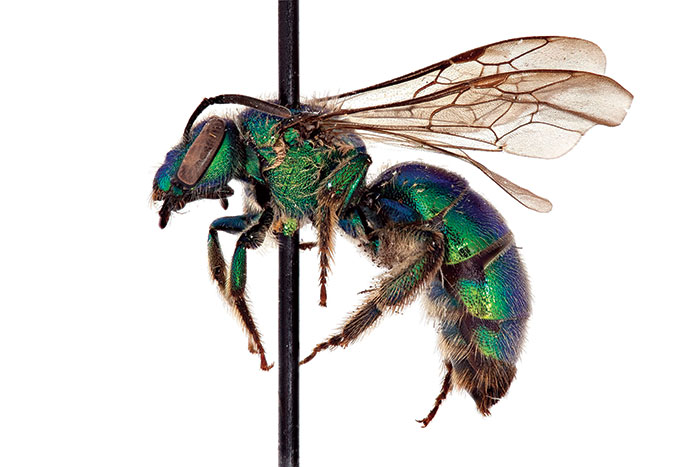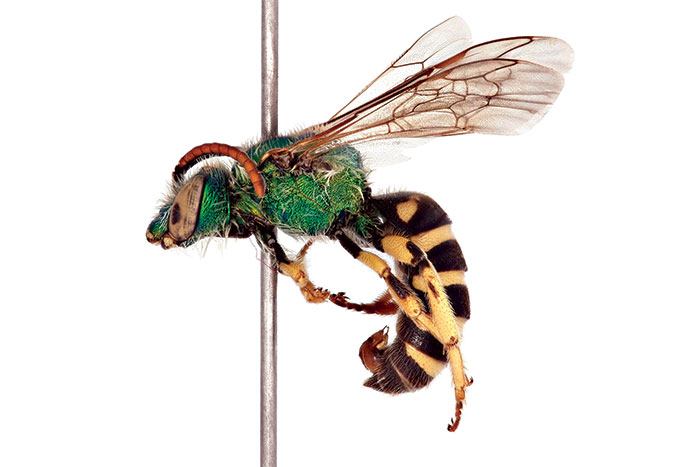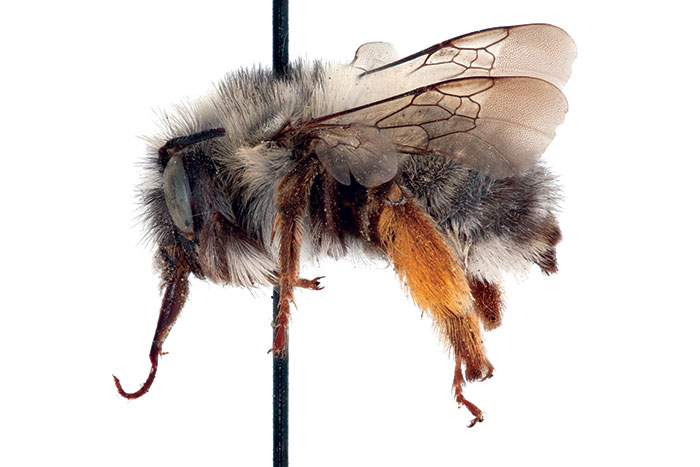So much is familiar about this quintessentially contemporary Canadian landscape: the undulating tangle of restored tall grass prairie, the regimented corn rows that bound one side, yellowed and drying under a web of east–west power lines. To the east lies the woolly green of Niagara’s hulking, protected escarpment; running almost parallel, a less imposing strip of sand-coloured big box stores (Costco, La-Z-Boy, Home Outfitters) that lines one of southern Ontario’s 400 series highways, among the busiest traffic corridors in North America. A crossroads, literally. Before Ancaster was amalgamated into the city of Hamilton, before it was a twee village of “olde shoppes” and pubs and subdivisions, before it became Upper Canada’s largest industrial and commercial centre, briefly overshadowing both Toronto and Hamilton, this was the intersection of the north–south Iroquois Trail and the east–west Mohawk Trail.
Among the dry September grasses of Ancaster’s sliver of prairie rehabilitation, goldenrod and purple asters nod and bow as the bees land on them. Appearing and disappearing with the hum and stealth of Jedi knights, they work the flowers with a singleness of purpose, their tongues reaching deep to lap up the nectar as pollen collects on their legs and backs. A scene seen, but seldom noticed, a thousand times over.
Most of the bees in this meadow are neither wild nor native. They are domesticated honeybees, perhaps kept in hives by the owners of the monster home that stands in the distance, on the other side of the tidy cornfield. Sheila Colla, a newly minted melittologist who defended her Ph.D. a week earlier, is not looking for kept honeybees. Dressed in the moisture-wicking grey and green of Mountain Equipment Co-op, she is searching for wild bumblebees, specifically Bombus affinis, commonly known as the rusty-patched bumblebee. It was once the fourth most common bee in these parts. After catching and releasing yet another (still common) Bombus impatiens, she plants the handle of her butterfly net and sighs. “There are honeybees on every flower,” she says despairingly. “This is the worst.” With feline reflex, her brown arms swipe the net over another bumblebee as she detects its baritone.
For eight years now, Colla has spent her summers stalking the rusty-patched bumblebee in the tall grasses of southern Ontario. In 2012, it became the first bee to be listed as endangered in Canada, largely due to her research and the interest of Laurence Packer, her galumphing giant of a former supervisor, who runs one of the largest bee labs in the world, at York University in Toronto. Out in the field from April to October, she and her research assistants have captured just two specimens: one in 2005 and another in 2009, both in Pinery Provincial Park, on the shores of Lake Huron. This quite probably makes her the last person to have seen and caught the rusty-patched bumblebee in Canada.
Colla, who was a city girl until university (she grew up in a subdivision in Scarborough), found the last specimen perched on spotted knapweed, an invasive species, between one of Ontario’s dwindling oak savannahs and Lake Huron’s sand dunes. Now it is pinned and preserved for another generation of melittologists (entomologists who specialize in bees), in Packer’s 400,000-specimen collection. She felt no compunction about killing it. “It was a male,” she explains. “They’re pretty much useless. They just mate and die.” After a pause, she adds softly, “I would never kill a queen.” Bumblebee colonies, unlike those of honeybees, are annual; they die off in the fall. Only the inseminated queen overwinters, to start a new colony in the spring.
There are more than 20,000 species of bees in the world, and about 800 in Canada. Almost all are wild native pollinators that have co-evolved with the plants that dominate our landscape, each with its own unique function. Giants by bee standards, bumblebees, with their furry coats, are particularly suited to a colder climate: they can fly in rain and snow, and can be found as far north as the Arctic Circle. The smallest bees are the size of a pinhead; a nest of 600 is no bigger than a walnut. Many bees are solitary, some of them cuckolders who steal into other nests to lay their eggs. But the best known of all bees is the one we have domesticated for thousands of years: the honeybee, or Apis mellifera, a species found on every continent except Antarctica. Among the most intelligent and manageable of insects, they have flourished in their adopted lands. Their colonies are an Adam Smith vision come to life, tens of thousands living in complex social hierarchies where labour is divided and each bee knows its role: the queen to lead, the nurses to clean the cells and feed the young, the drones and workers to forage in the fields, the guards to defend the nest.
Much has been written about the disappearance of honeybees since 2006, when David Hackenberg, a migratory beekeeper based in Pennsylvania, opened his 3,000 hives in central Florida to find that 80 percent of his colonies were gone. The syndrome was dubbed colony collapse disorder, and it has since killed off about a third of American honeybee colonies each year. Canadian honeybees are also under siege, although not from CCD, which has yet to be identified in Canada, but the causes are also mysterious. Even more mysterious are the threats faced by our wild bees, some of which have been declining steadily for decades. In eastern Canada, about half of our native bumblebee species are in trouble, yet it was pure luck that Colla happened across some research conducted by a doctoral student in the 1970s, which drew her attention to the rusty-patched bumblebee. Otherwise, she might not have noticed its decline, nor decided to examine historical collections at museums in Canada and the United States to chart the fortunes of other eastern species. (Her field guide to North American bumblebees, published by Princeton University Press, is forthcoming.)
When she defended her thesis on the rusty-patched bumblebee, a discussion about extinction ensued. “How many bumblebee species can we afford to lose and still be okay? ” asked one of her examiners. “None,” replied Colla, with all of the assuredness of a thirty-year-old whiz. “There’s not a lot of redundancy.” To which he responded, “Good luck with that.”
Packer, who lectures on biodiversity and entomology when he is not collecting specimens in Kenya or South America, thinks we might have predicted the collapse of the honeybee hives if we had paid more attention to the declines in wild bees that have worried conservation biologists for years. Such inattention could prove costly. The number of global crops that depend on animal pollination grows every year. Their value is estimated at $209 billion, and if you include livestock feed crops such as alfalfa and clover it is much higher. But while the number of foods that depend on pollinators has quadrupled since 1961, domesticated honeybee hives have not kept pace. This leads researchers to believe that wild bees are doing much of the work for free and not always getting the credit; a recent study in the United Kingdom suggests that only 34 percent of the country’s pollination services could be performed by honeybees under the most favourable conditions. So even the experts who have devoted their lives to studying honeybees will tell you they are just as concerned about the fate of wild pollinators like Sheila Colla’s rusty-patched bumblebee. The widespread decline of wild bees could have serious implications for both biodiversity and food production.
Very little is known about pollination, given its essential contribution to our survival. “Great truths,” as the evolutionary biologist E. O. Wilson writes, “are sometimes so enveloping and exist in such plain view as to be invisible.” One such truth, he observes, “is the dominance on the land of flowering plants and insects.” This symbiotic evolutionary strategy developed around 130 million years ago, guaranteeing the hegemony of flowering plants, and the insects that fertilize them by delivering pollen from the male blossoms’ anthers to the females’ stigma. Some plants don’t require pollination; others rely on the wind to move pollen about. Among those that depend on animal pollinators, the lion’s share of the work is typically done by bees. But not all pollinators are created equal. Many flowers are shaped in such a way that only a certain bee’s tongue can reach their nectar; some bees store pollen balls in baskets behind their legs; others collect the yellow dust on their hairy coats, where it sticks for the same reason that a rubbed balloon clings to a seven-year-old’s head: static electricity.
Charles Darwin was obsessed with the bees that visited his garden in Kent, UK, and used the “humble-bee,” as he and others then referred to it, to explore the idea of co-evolution, though he did not call it that. “Thus I can understand how a flower and a bee might slowly become, either simultaneously or one after the other, modified and adapted in the most perfect manner to each other, by the continued preservation of individuals presenting mutual and slightly favourable deviations of structure,” he wrote in On the Origin of Species. He had observed that heartsease and red clover are visited exclusively by the bumblebee, and could imagine that both “would become very rare, or wholly disappear” if the bumblebee genus went extinct. When one species disappears, others follow, especially when that species may, like the rusty-patched bumblebee, act as a keystone. Researchers are looking into the possibility that the decline of the shrike, a songbird that impales bumblebees on hawthorns for its meals, may be intertwined with the bumblebee decline.
Just as bees and flowering plants co-evolved, so did bees and human beings. An ancient cave painting dated to 10,000 BC depicts a man robbing a hive, suggesting that we had already developed a taste for honey. By 3,000 BC, we were keeping artificial hives, which is probably when the relationship became beneficial for both parties. Bees pollinated our crops and provided us with honey, once the primary sweetener in many diets. In return, we built them safe houses in which to raise their broods; we cleared the land of forests, giving them sunnier meadows and more wildflowers for forage; and we introduced them to habitats around the world, where they, and the crops they pollinated, flourished. Without bees, the human race might never have developed agrarian societies, nor exploded in population.
The honeybee arrived in North America in 1622. While some colonies in Canada went feral, most today are managed by beekeepers, who must tend their hives carefully if the bees are to survive the deep cold of winter and a growing number of threats, from infestations of parasitic mites to deadly viruses and fungi. Still, from a farmer’s perspective, honeybees have much to recommend them. As well as providing a sweet side business (honey), they are easy to manage. Their hives can be immense, housing as many as 25,000 to 30,000 bees, which enables them to send more foragers into the field. And they are excellent communicators, waggle-dancing to share the discovery of a new food source with their hive mates, which allows them to exploit it more quickly.
The intensive practice of trucking bee colonies from one place to another is only about ten years old in Canada, but the value of the country’s pollination services is already estimated at $1.3 to $1.7 billion, at least ten times that of honey production, and a boon to struggling beekeepers who must now compete against cheaper imports from China, Australia, and South America. (Canadian beekeepers sell their honey for less than $2 a pound wholesale, which is sometimes just slightly more than what it costs to produce it.) As pollination becomes ever more lucrative, the distances travelled by migratory beekeepers have grown steadily. Last year, for instance, some 25,000 colonies were transported from Ontario to New Brunswick to pollinate blueberry crops. In part, this is because of built-in protectionism: while honey is sold on the global food market, where foreign producers can dictate prices, the market for pollination is strictly domestic. You can’t import pollinators, because beehives are not allowed to cross international borders. In theory, this protects our hives from disease.
The honeybee hives at the University of Guelph, in south-central Ontario, used to sit in the middle of the campus, surrounded by tall hedges that forced the drones to fly up and out of harm’s way. “Back then, nobody fussed about bees,” says Paul Kelly, the fifty-four-year-old apiarist who oversees the 300 or so hives the university maintains on and off campus. Today, the main apiary is down the road, where it has been managed out of an unassuming brick bungalow since the 1960s. In the bee yards at the front and back, the multicoloured hives are stacked higgledy-piggledy but with purpose: if Kelly lined them up in rows, it would confuse the foragers, who might then return to the wrong hive. “They can’t count,” he explains, his blue eyes twinkling. His brisk pace slows down considerably as he nears the yard.
A beekeeper’s main task, he says, is to prevent swarming. If a queen decides to abandon the hive, half of the colony will follow her, leaving the other half behind to repopulate it; until they do, the hive is far less productive. “You’ve gotta be tuned in to where they’re at,” he explains, carefully laying his hand on top of the bees as they crawl across a frame he has pulled out to inspect. He has me do the same. They feel surprisingly warm and furry under my palm, and the experience is strangely calming, not unlike patting a dog or a cat. “You have to watch what’s going on,” he says. And you need to keep the bees happy: if they feel cramped or uncomfortable, or if the queen is getting on in years, they are more likely to swarm.
Another task, which grows in importance with each passing year, and which, arguably, should be the apiarist’s first concern, is keeping at bay the twenty-nine documented pathogens that plague honeybees. Guelph operates one of the largest honeybee research programs in Canada, under the direction of Ernesto Guzman, a professor of apiculture at the School of Environmental Sciences. In Guelph’s laboratories, experts study the genetics and behaviour of Kelly’s bees, trying to understand the causes of honeybee mortality, and to breed species that can resist the stress of parasites. “The mites are terrible this year,” says Kelly, pointing to a rusty brown mite that has attached itself to the back of one of the hundreds of bees on the frame. A few cells over, a newborn emerges, dewy eyed and fluffy. “I’m worried that we’ll lose a lot of colonies this winter,” he adds.
Mites have plagued Canada’s honeybees since the late 1980s. The 1970s had been good years for beekeepers. World honey prices had increased from fifteen to fifty cents a pound, and as the business became more lucrative the number of beehives in Canada rose dramatically. At the time, hives could be imported from the US, allowing beekeepers to build up colonies quickly. Then, in 1987, the border was closed, in an effort to keep out tracheal and varroa mites, which had already been found in American hives. But even that couldn’t stop the pests. No one knows for sure how infected bees reached New Brunswick in 1989. They may have made their own way here, or, as Guzman suggests, a beekeeper could have smuggled them in; a queen in a small plastic test tube is easy enough to carry across the border undetected.
Guzman, who grew up in a small town in Oaxaca, Mexico, and used to keep bees on his apartment roof in Mexico City, believes Varroa destructor is the leading cause of honeybee mortality in Canada. He has produced a study of 400 hives to support this hypothesis, though he allows that other factors may weaken the bees’ immune systems and make them more susceptible to mites and the viruses they carry.
At first, beekeepers managed to control infestations with synthetic miticides, but over time the parasites developed a resistance to them. As an alternative, Kelly employs less aggressive, more organic treatments, such as thymol, derived from an essential oil of thyme. However, controlling pathogens continues to prove challenging. “You’re trying to kill one bug that lives on another bug that lives in a box of food,” is how Kelly puts it. Guzman, whose lab can decode a bee’s DNA in a matter of hours, suggests that one solution is to develop more resistant bees. So Guelph keeps hives on Georgina and Thorah Islands on Lake Simcoe, where bees can be bred in isolation to reduce the chances of accidental mating with wild or competing honeybee colonies. (In one way, the closed border has been a boon: Canadian apiarists have succeeded in breeding kinder, gentler races that are easier to work with.)
In the years following the varroa mite’s arrival, Canadian beekeepers had to adjust to higher mortality rates. Soon 15 percent was routine. Then, between 2006 and 2012, that doubled: four out of the past six years have seen winter losses just above or below 30 percent. While apiarists here are not experiencing colony collapse disorder—which is characterized by bees abandoning their hives rather than dying in them—they sometimes face mortality rates comparable with those in the US.
Most researchers agree on the first ten causes of bee mortality, if not how to rank them. Guzman’s lab focuses on five: varroa mites, tracheal mites, the nosema virus, overwintering, and colony population. Of these, he says varroa can be linked to 85 percent of mortalities. The nosema virus is a contributing factor but does not kill a hive’s inhabitants. Everything else, he says, points to poor management practices. “Beekeepers blame everything but themselves,” he says with some exasperation, and even mites have a lesser impact under good stewardship.
Perhaps the bees are dying because the methods we use to produce our food are unsustainable. Beekeepers have become more aggressive about removing honey and pollen and prematurely dividing colonies—practices that can compromise a hive’s well-being. More bees are being trucked over longer distances to perform pollination services, preferably at night, because they can overheat and die during the day. Synthetic brood pheromones are sometimes used to increase production by tricking the bees to do more foraging, and, increasingly, bees are being forced to feed on monocultural diets from single crops. “The economic reality is that beekeepers have to manage intensively,” says Kelly—perhaps not always in the best interests of the bees and the many species, us included, that depend on them.
In the late 1960s, Peter Kevan, the grandfather of pollinator science in Canada, watched a well-meaning government phase out the toxic pesticide DDT in New Brunswick. Instead, forestry crews were given a biodegradable organophosphate, fenitrothion, to control spruce budworm, spraying it across huge swaths of coniferous forest. It seemed like a good idea at the time, but it turned out that fenitrothion (which is closely related to the nerve gases used in World War I) was even more toxic for the wild bees and bumblebees on which the province’s blueberry crops depended, and crop yields collapsed. The timing of the spraying, at the height of blueberry flowering, was especially unfortunate. The use of fenitrothion was later abandoned, although it took up to eight years for some native bee populations to recover, and berry yields continued to drop until growers brought in honeybees to make up the pollination deficit.
In 2012, Kevan wondered if history was about to repeat itself. Within the environmental sciences, one of the more controversial families of pesticides is the neonicotinoids, which are similar in chemical structure to nicotine and used to coat corn seeds. They have been applied to crops in North America since the early 1990s, even though the US Environmental Protection Agency has shown them to be highly toxic to bees. Last spring was unseasonably dry in Ontario, and during planting the wind blew clouds of neonicotinoid-treated seed coatings over southern Ontario cornfields. Bees—both managed honeybees and wild species—began dying, and in June a delegation of Ontario beekeepers went to Ottawa to lobby for a ban. While this was the first neonicotinoid-related calamity in Canada, similar cases have been documented in Germany, Italy, and the US.
Even if neonicotinoids are as dangerous to bees as Kevan believes, pesticides contribute to a larger problem: habitat degradation. While the initial clearing of forests probably benefited many species, the juggernaut of sprawl and intensive farming have made life ever more difficult for most of them. As new technologies come to market, farmers are finding ways to make every bit of land yield more crops—and to eradicate the flowering weeds that may compete with them but might also sustain native bees. Habitat loss is one of the reasons we have become so dependent on the mobile pollination services of honeybees.
The rule of thumb is that the more a habitat is managed or devoted to one crop, the less diverse the surrounding bee populations. Down east, for example, scientists have observed that wild bees can only pollinate blueberries if the fields are small. In fields of more than a few hundred square metres, bumblebees and other wild pollinators will not penetrate deeply into the monoculture. It is too far to fly for an efficient forager. Wild pollinators that do establish nests in the middle of large fields fare poorly; while they can gorge on nectar during blooming, they starve once the blossoms die off. Honeybees do much better in these circumstances, flying up to three kilometres to forage, and relying on beekeepers to move them to new feeding grounds.
“In the past, when people had small mixed-use farms, wild bees did well and could provide adequate pollination,” says Cory Sheffield, an alumnus of Laurence Packer’s lab at York University who now works at the Royal Saskatchewan Museum. He visited the Annapolis Valley in Nova Scotia to compare bee diversity in apple orchards in highly managed monocultures with those in natural and semi-natural habitats, and for a baseline he also collected bee samples in a wild setting. He found that farmers could more than double their crops if they left small strips of flowers for the bees to forage in after the apple blossoms had disappeared. Other conservation biologists have demonstrated similar results. The irony is hard to ignore: agriculture, the very industry that depends most on pollination, might be the prime suspect in the demise of our pollinators.
South of Detroit and Windsor, sandwiched between Lake Erie and Lake St. Clair, the flat lines of Essex County farmland carve the southern tip of Ontario into tidy rectangular parcels of fertile, well-drained soil. When you approach Leamington from Highway 401, it is difficult to imagine this area as the nearly impenetrable forest it once was, or that the fires lit by would-be farmers to clear the land once burned so brightly they could be seen 500 kilometres west in Chicago. Today the aerial view looks more like a semi-industrial park, because the area is dominated by gunmetal grey–framed greenhouses. With some 355 hectares under greenhouse vegetable production, more than anywhere else in North America, the region’s output is larger than the entire industry in the US, and growing much faster than other types of agriculture.
Like many small counties with something to prove, the area has several nicknames: the Sun Parlour, the Tomato Capital of Canada, the Greenhouse Capital of North America. Over a century ago, H. J. Heinz set up a Canadian operation here, and as increasing numbers of Italian immigrants settled in the area its specialization in tomatoes was assured. Fields upon fields are still grown for canning and processing into Heinz ketchup, and the bulk of the county’s field crop is destined for processing. But tomatoes that end up in cans, sauces, and ketchup fetch lower prices than those grown in greenhouses, which command some of the highest prices in the produce section, especially when they turn up, unblemished and vine ripened, in the dead of winter.
The commercial greenhouse is a relatively new development. Some desultory production was done under glass at the turn of the twentieth century, but it didn’t take hold until the end of World War II, when waves of Europeans arrived in Canada. Among agricultural immigrants, the largest group was Dutch, many with ties to the Netherlands’ pioneering greenhouse growers. And they kept coming: by 2001, 23 percent of Canada’s immigrant farm population was Dutch. Their timing was impeccable. Until the early 1990s, tomatoes were costly to produce under glass, because growers had to painstakingly pollinate, or “buzz,” the flowers using manual vibrators. This was prohibitively expensive, and far less effective than the work done in open-air tomato fields by wild bumblebees, which instinctively visit the flowers at just the right time.
Methods for managing bumblebees were developed in Manitoba in the 1960s by scientists Chris Plowright and Cam Jay, but it took foreign entrepreneurs to make the research profitable. In 1987, Biobest, a Belgian company that specializes in sustainable crop management, produced the world’s first commercially viable bumblebee pollination system. This breakthrough had profound effects on greenhouse agriculture. European farmers could now mail-order colonies of bumblebees in cardboard boxes that looked remarkably like the ones in which your accountant stores tax files. (The boxes vibrate and buzz alarmingly when you pick them up, and it took postal workers some time to get used to them.) By 1995, Biobest had set up operations in Leamington, and had begun to work on domesticating and breeding a local native bumblebee, Bombus impatiens, for the North American greenhouse market.
About 95 percent of commercial bumblebees sold worldwide now end up in tomato greenhouses. Richard Ward, the bleached blond managing director of Biobest Canada, attributes the sharp global increase in greenhouse farming to the success of managed bumblebees. His company sends them across Canada, the US, Costa Rica, the Caribbean, and, until recently, Mexico, where he oversaw the launch of a second North American production facility. Managed bumblebees from Biobest and its main competitor, Koppert, a Dutch company that runs a Canadian subsidiary out of a Toronto suburb, are used by farmers in more than fifty countries, the latest being China. The bees are increasingly used for open-air field work, too, as honeybees become more scarce and expensive. Tellingly, the front cover of a recent UN report on the honeybee crisis features a close-up of a mite piggybacking on a honeybee; a healthy bumblebee, a picture of hope, graced its final page.
Greenhouses represent modern farming at its most intensive and controlled extreme: the capital investments and inputs are much more expensive, and the yields much greater (up to ten times higher than in the field), but so are the risks for pathogens. These are highly controlled environments, microcosms where farmers can control temperature, light intensity, atmospheric carbon dioxide levels, and in some cases humidity, to produce the best possible crops. Meanwhile, the warm, humid conditions that make plants grow also promote the many pests that prey on them. Inside the greenhouse, as in Paul Kelly’s hives, this poses a challenge: how do you keep parasites at bay without killing off the bees? Most greenhouse growers rely on “integrated pest management,” meaning they balance pesticides (which can quickly build up residues if overused) with biological controls, releasing “good bugs” to kill off the “bad bugs” (such as whitefly) that can blemish the fruit or weaken the plants. When Ward started at Biobest in 2000, biological controls accounted for just one-third of the company’s sales. In the years since, bumblebee operations have more than tripled, but biological controls have grown even faster, now representing two-thirds of Biobest’s sales.
As Ward showed me around one of the greenhouses the company services, he pointed to the vents. Managed bumblebees can escape through them, carrying with them diseases bred inside, and they are highly motivated to do so. “Bumblebees hate tomato pollen,” he said, with the faintest trace of a Barbadian accent. When greenhouse operations multiplied in the 1990s, many wild species began to decline. Sheila Colla and other scientists hypothesized that the wild bumblebees might be dying from pathogen spillover; managed bumblebees could be infecting their wild cousins. In the mid-2000s, she did further research in Leamington and discovered that wild bumblebees near greenhouses indeed exhibited higher pathogen loads. (Japan helps prevent this by legally requiring greenhouse growers to use netting, which makes it harder for the bees to escape.)
Colla has now co-authored two papers that examine the pathogen spillover hypothesis. The second, published last year, concluded that while there was some evidence to support the premise, it alone could not explain the mysterious and widespread disappearance of the rusty-patched bumblebee. The same was true for habitat loss and pesticides: although both have well-established negative effects on bee colonies, neither can be pinpointed as the sole cause, given that declines have occurred in such diverse settings. Colla is collaborating on another report that will investigate how climate change has affected bumblebees. As with honeybees, the most plausible explanation for their decline is that multiple stressors are working in deadly combination; there may be no single culprit.
Extinction, as Darwin saw it, was a fact of life, a fact of nature—and proof of his new theory. As some species adapted and evolved, he surmised, others would disappear, in what he saw as the endless struggle for existence: natural selection. “If we forget for an instant, that each species tends to increase inordinately, and that some check is always in action, yet seldom perceived by us, the whole economy of nature will be utterly obscured,” he wrote.
We cannot prevent all extinctions. For one thing, there isn’t enough room on the planet for the numbers of species living here to increase indefinitely. But this is not to say we should not be alarmed by the widespread decline of these important pollinators, or by our unmitigated reliance on one managed species. Sichuan, China, no longer has any bees to pollinate the orchards, and the work must be done painstakingly, by hand.
We still know so little about the creatures with whom we share this planet—and we may never know, because they are disappearing faster than we can learn about them. We say there are 20,000 species of bees, but those are just the ones we have identified so far; another 10,000 may remain to be discovered. When I visited Laurence Packer’s laboratory in Toronto, one of his graduate students told me about two new species he had identified while writing his master’s thesis, a phone book stack of papers held together with a single metal ring, ready for binding; he had just heard that another had been found on the West Coast earlier in the summer.
As new species are discovered and old ones disappear, taxonomists must now act as both christeners and obituarists, to borrow a phrase from Richard Fortey, a former senior paleontologist at the Natural History Museum in London, UK. He compares taxonomy to a dictionary: necessary if we are to read and understand the book of life. I’m not so sure. This may be no more attainable than the Platonic ideal of Newton’s universe, one that runs like clockwork and was once believed, if only we could understand it, to offer us a predictable future.
Perhaps the greatest threat to the bees—and to us, for that matter—is hubris, and the misplaced confidence that so much control over our environment has given us. Perhaps we have only understood a part of Darwin’s theory of natural selection, believing survival of the fittest to mean survival of the fittest species—humanity—and overlooking how much we depend on the many other creatures that make up the web of life. No species, not even our own, can exist in a vacuum. Even the greenhouse has escape vents. Co-evolution, not evolution, is the name of the game.
In his latest book, The Social Conquest of Earth, E. O. Wilson posits a new, highly controversial reading of evolutionary theory that accounts for the success of so many social animals and the many species of bees that form colonies. He believes that the struggle for existence happens on many levels. Genes may be selected in ways that benefit the individual and its kin, but they are also selected in ways that benefit the social group and the individual’s participation in it. The interests of the individual are often at odds with those of the group. How they compete, he argues, defines the human condition, and the better and worse angels of our nature. For bees, however, the interests of the group tend to outweigh those of the few, whose survival is best assured by that of the group. When I asked Ernesto Guzman why he chose to devote his life to bees, his answer surprised me. “I got hooked on bees when I read about their behaviour,” he said with a wide, beatific smile. (It’s easy to imagine him wearing a priest’s collar in another age.) “As a teenager, I wondered why we couldn’t be more like the bees. They sacrifice their lives for the good of the community.”
The day I visited Packer’s lab was the day after Hurricane Sandy blew through Toronto. The damage was negligible compared with the devastation on the eastern seaboard. Whole populations had been displaced, and not just of people: a songbird that should have been in Central or South America lay dead on my driveway. Earlier that morning, I had walked by a neighbour’s house and seen a massive oak that had split in two, one trunk crashing into the house to the east, the other hitting the one to the west. Blind luck had protected the tree’s owner. In an age in which we control so much, it is tempting to forget our frailty. We may plan, but nature will have the last word.
This appeared in the March 2013 issue.

